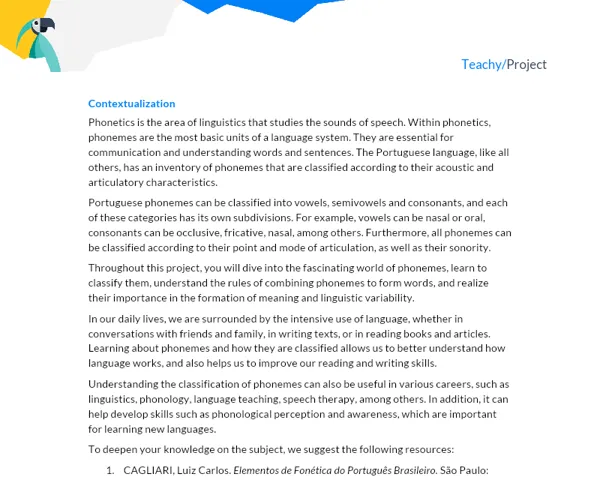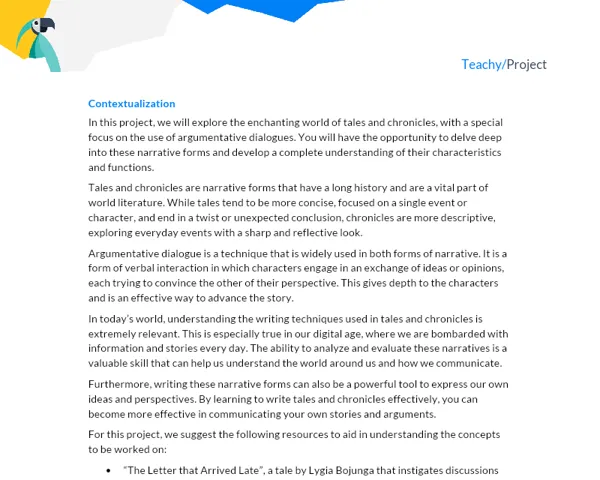Contextualization
Theoretical Introduction
Narrative has the power to capture and retain people's attention, allowing us to imagine and experience the world in a unique way. In the literary field, narrative takes on different formats, among them, biography and autobiography, which are the objects of our study. These literary genres are characterized by telling the life of an individual, with biography being an account made by another person, and autobiography, a narration made by the individual about their own life.
By studying biographies and autobiographies, we learn about events, historical and cultural contexts, as well as about the subject of the narrative. It is important to emphasize that these textual genres do not offer an objective account of a person's life - they are imbued with interpretations, feelings, and perspectives, prompting the reader to a critical analysis of the truthfulness and intention behind each narrative.
In the field of journalism, these textual genres can also be found, as well as different editorial approaches, such as investigative journalism, sensationalism, among others. Knowledge of these different news approaches is essential for the development of a critical analysis of the content conveyed, especially in a world increasingly dominated by news of dubious origin and veracity.
Contextualization
More and more, we see biographies and autobiographies being used as the basis for cultural production, whether in films, series, books, or plays. It is not uncommon to see movies based on real events competing for prestigious awards. These textual genres offer a personal view of historical events, allow for a greater understanding of different cultures and perspectives, and help humanize public figures.
Furthermore, the ability to understand and critically analyze different editorial proposals is an increasingly necessary skill in the current information age. We are constantly bombarded with news from various sources, often with the intention to shock or engage the reader. This skill not only helps in discerning fake news but also promotes the development of critical and analytical thinking that can be applied in various other areas of life.
Practical Activity
Activity Title: "Unveiling Stories: The Art of Telling Lives"
Project Objectives
- Understand the importance and function of biography and autobiography in literature and journalism;
- Differentiate between sensationalist and investigative journalistic approaches in the composition of these textual genres;
- Develop skills in critical reading, writing, research, analytical thinking, teamwork, and time management.
Detailed Project Description:
Students, divided into groups of 3 to 5, will work to research, analyze, and present a biography and an autobiography of well-known figures. Each group will choose a real-world character, in agreement with the other teams, on the condition that the chosen person has a biography and an autobiography available for study. The groups will work together throughout the project, which will last one month, and will produce a final presentation and a detailed report.
Required Materials:
- Access to the school or city library;
- Computers with internet access for research;
- Materials to create presentations: cardboard, markers, glue, scissors, etc.;
- Text editing software for report writing.
Detailed Step-by-Step for Activity Execution:
-
Determine the character to study (2 hours): Each group will choose a public figure (they can be a politician, activist, artist, athlete, writer, etc.) who has both a biography and an autobiography available for reading. The choice must be approved by the teacher to avoid repetitions.
-
Initial reading and discussion (2 hours): All group members must read both the biography and autobiography of the chosen character. During the reading, students should pay attention to distinguish the approach and perspective of each text.
-
Additional research and discussion (2 hours): The group must conduct additional research, reading news, articles, and other sources about the chosen character. The groups will discuss the differences between the biography and autobiography, and how the author's perspective and intention influence the narrative.
-
Preparation of the presentation (3 hours): The group will prepare a 15-minute presentation explaining what they have learned about the character based on their readings and research. The presentation should include a segment on the difference between biography and autobiography, the author's influence on the narrative, and how news and media portray the character.
-
Writing the Report (3 hours): Finally, each group must prepare a detailed report of the project. The report should include:
a. Introduction: The group must explain the importance of the chosen character and why they opted for them.
b. Development: The group must discuss the biography and autobiography of the character, highlighting the differences in perspective and approach in each text. They should explain how the authors shape their narratives and how this influences our perception of the character. The sources used in the research should also be discussed here.
c. Conclusion: The group must summarize their main points and discussions, emphasizing what they have learned throughout the project.
d. Bibliography: The group must list all sources used in the project, including the biography and autobiography, all research materials, and any additional sources that contributed to the project.
-
Final Presentation and Report Submission (last day of the month): The group will present their findings to the class and submit the written report to the teacher.
Project Deliverables
- An oral presentation that clearly and articulately presents the main points learned throughout the project.
- Detailed written report, containing an in-depth analysis of the readings and research conducted. This document must follow the requested structure and be submitted in digital format to the teacher.
This project is highly practical and participatory, requiring students to engage with the material, think critically about what they are reading, and be able to analyze and present their findings coherently. By the end of the activity, students should have gained a deeper understanding of biographies and autobiographies, as well as useful skills such as teamwork, time management, and critical thinking.



